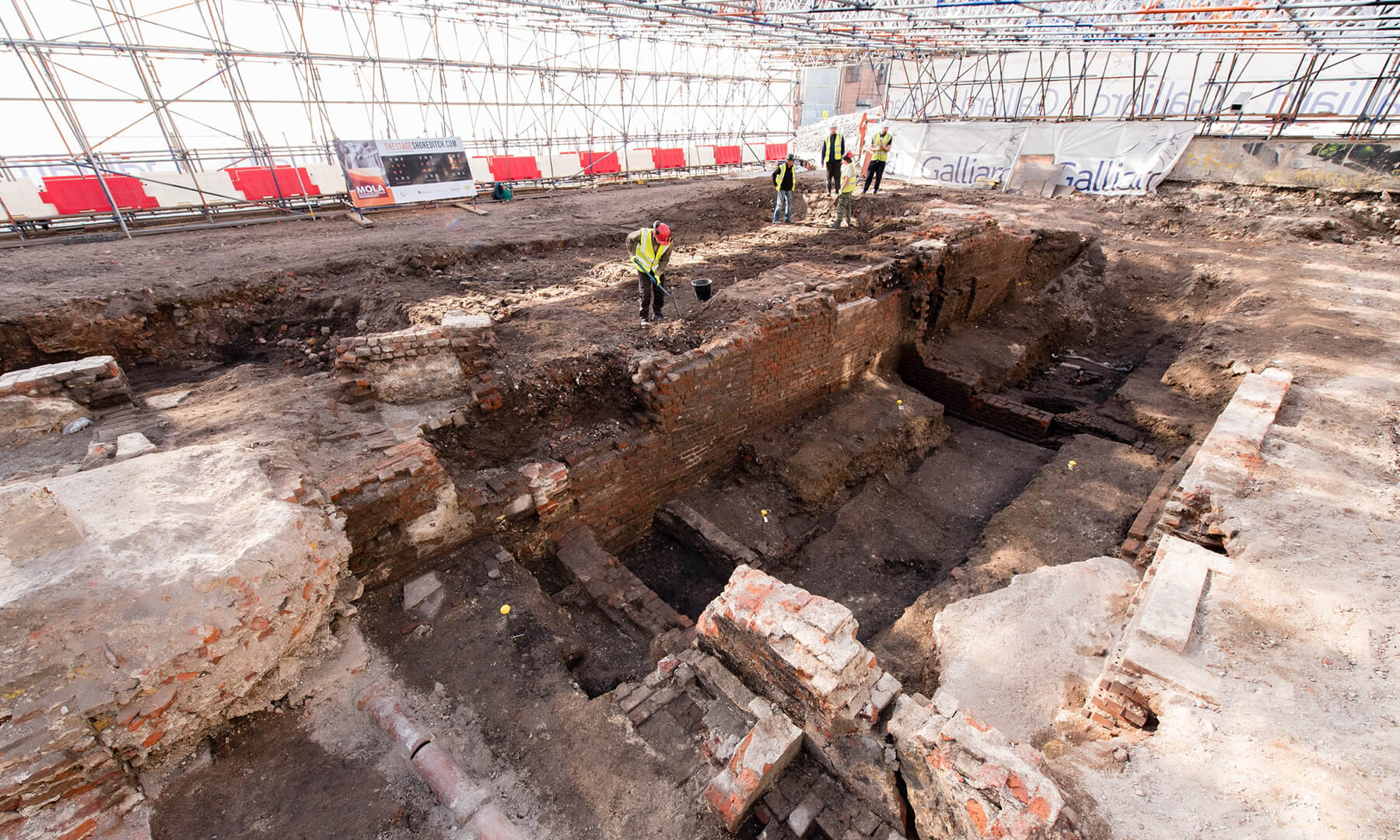News & Events

Guest Author
David Divers is a Senior Project Manager at MOLA and has worked on archaeological projects across London for over 25 years. In this blog, he explains why The Stage is unlike any other archaeological project he has worked on.
On any regular project, archaeological remains are uncovered, recorded then removed from the site so that construction can begin. Archaeology in its very nature is a process of destruction, preserving knowledge of the past and the material recovered for further research. When a dig is over there is often nothing left at the site to hint at its past, let alone experience it. However, The Stage is no ordinary project.
As a Project Manager for MOLA, it has been a great privilege to work on a project where the archaeology truly has been at the core of the development. The clue is in the name!
The discovery of Shakespeare’s Curtain playhouse at the site, one of the early Elizabethan Shakespearean playhouses, has inspired every aspect of the development. The remains of the playhouse are preserved in-situ and The Stage team have designed the entire concept of the development around them, incorporating a dedicated public space. Embracing the challenges of regenerating such an important site they have enabled the thorough archaeological research required to understand as much as possible about the internationally significant remains of the Curtain playhouse.
It’s really important to MOLA, as an educational charity, that we share our findings with the public at every opportunity. When our excavations began in 2016 we knew that the public, academics, thespians and the local community would want to be able to see what had been found for themselves, so we worked with The Stage to put on a programme of public events, opened an onsite visitor centre and installed a viewing platform which allowed for thousands of people to share in our discoveries. Even though the excavation is complete, we are still making discoveries as the team research the site records and the artefacts recovered during the excavation. The story should get even more exciting as this research work progresses.
I am really looking forward to returning to site when the construction work for the new development has been completed. And to see the remains of the theatre, which were covered over to protect them during construction, on display in a purpose-built visitor centre.
About the author
David Divers is a Senior Project Manager at MOLA and has worked on archaeological projects across London for over 25 years.